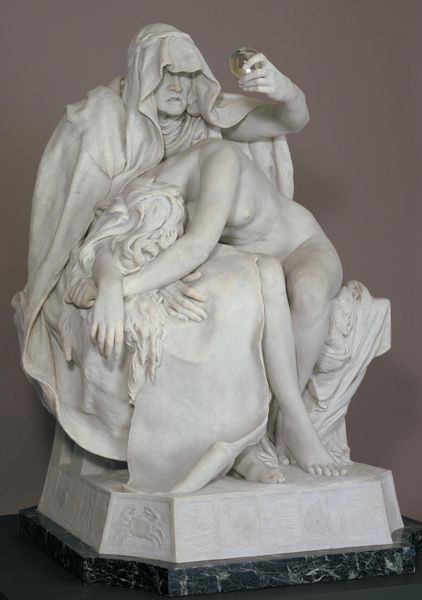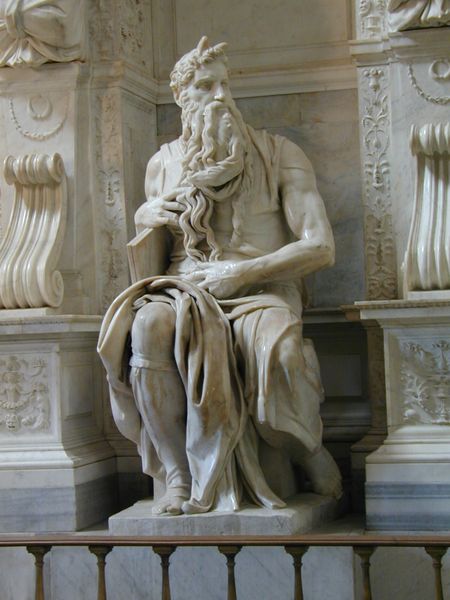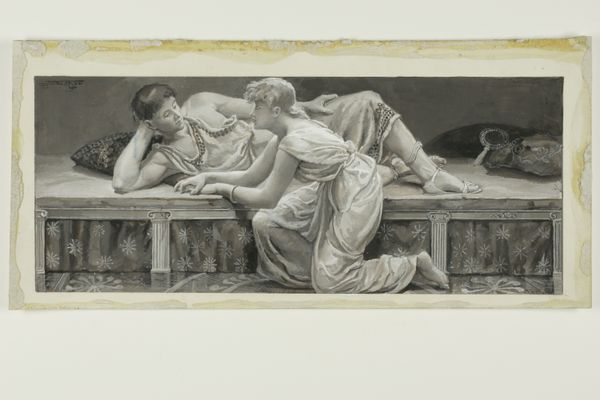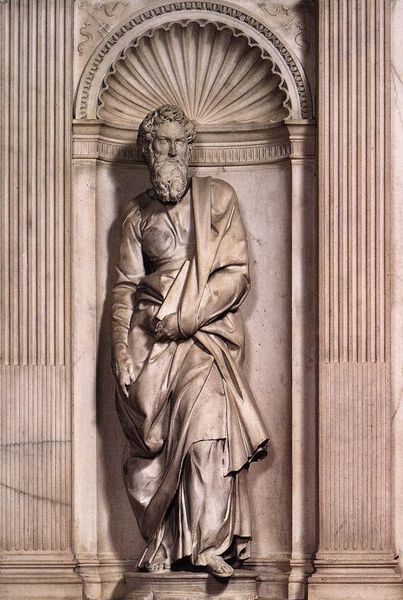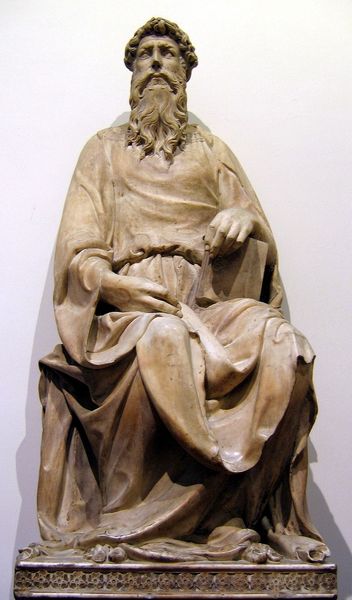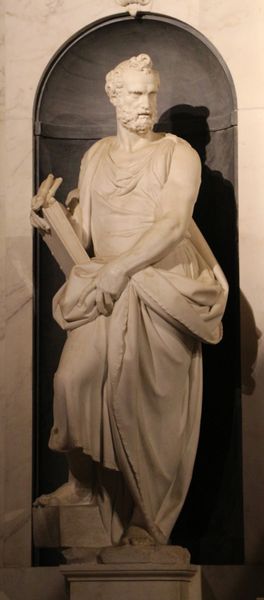
Plaster Cast in the Ucl Flaxman Gallery
0:00
0:00
johnflaxman
University College London (UCL), London, UK
carving, relief, sculpture, plaster
#
portrait
#
carving
#
neoclassicism
#
sculpture
#
greek-and-roman-art
#
relief
#
figuration
#
sculpture
#
plaster
#
history-painting
#
academic-art
Copyright: Public domain
Curator: Here we have a plaster cast currently housed in the UCL Flaxman Gallery. The piece embodies the Neoclassical style that Flaxman championed. It features three seated figures in relief, the central one intently reading from a book. Editor: The figures definitely give me the impression of classical philosophers, though there is something a bit sterile in the composition and the overall tonality seems muted. Perhaps this relates to academic art? Curator: Yes, the 'academic' label is insightful. Flaxman, though drawing on Greek and Roman art, worked within established academic frameworks of his time. His approach certainly resonated with the tastes of the era. In viewing pieces like this we should reflect on art and its interaction within these settings, noting that the figures present almost faceless characteristics and forms. This makes it difficult to attach any contemporary ideas of inclusivity and representation within gender, race or even religion to its design or forms. Editor: It feels like a re-imagining, devoid of its historical and religious context to a modern observer. There's a distinct emphasis on reason and order, hallmarks of Neoclassical ideals, yet it feels like the lack of identity detracts from that concept here. Curator: Absolutely. It's crucial to acknowledge the context in which these plaster casts were made and displayed. Often, these casts served an educational purpose. Plaster was an inexpensive material allowing people to reproduce art without using the original media. This democratizing process allowed all to participate within educational frameworks. Editor: That educational intention is an important consideration. To what degree did the intention help enable an elitist framework based upon selective history? And how is that understood today as we analyze art with its colonial past? There are indeed layers of history within art institutions and art histories we use when constructing new understandings about works such as this. Curator: Indeed, art pieces and art histories are a tool to understanding intersectional approaches across contemporary lines of race, politics and identity. It invites critical thinking about what the works may signify within larger and contemporary social discourse, while also providing a sense of our history. Editor: Agreed, it's these juxtapositions and layers of discourse that provide greater context and relevance as our visitors discover artworks throughout time. It reminds us to maintain historical understandings, and continue pushing towards new inclusive interpretations.
Comments
No comments
Be the first to comment and join the conversation on the ultimate creative platform.
